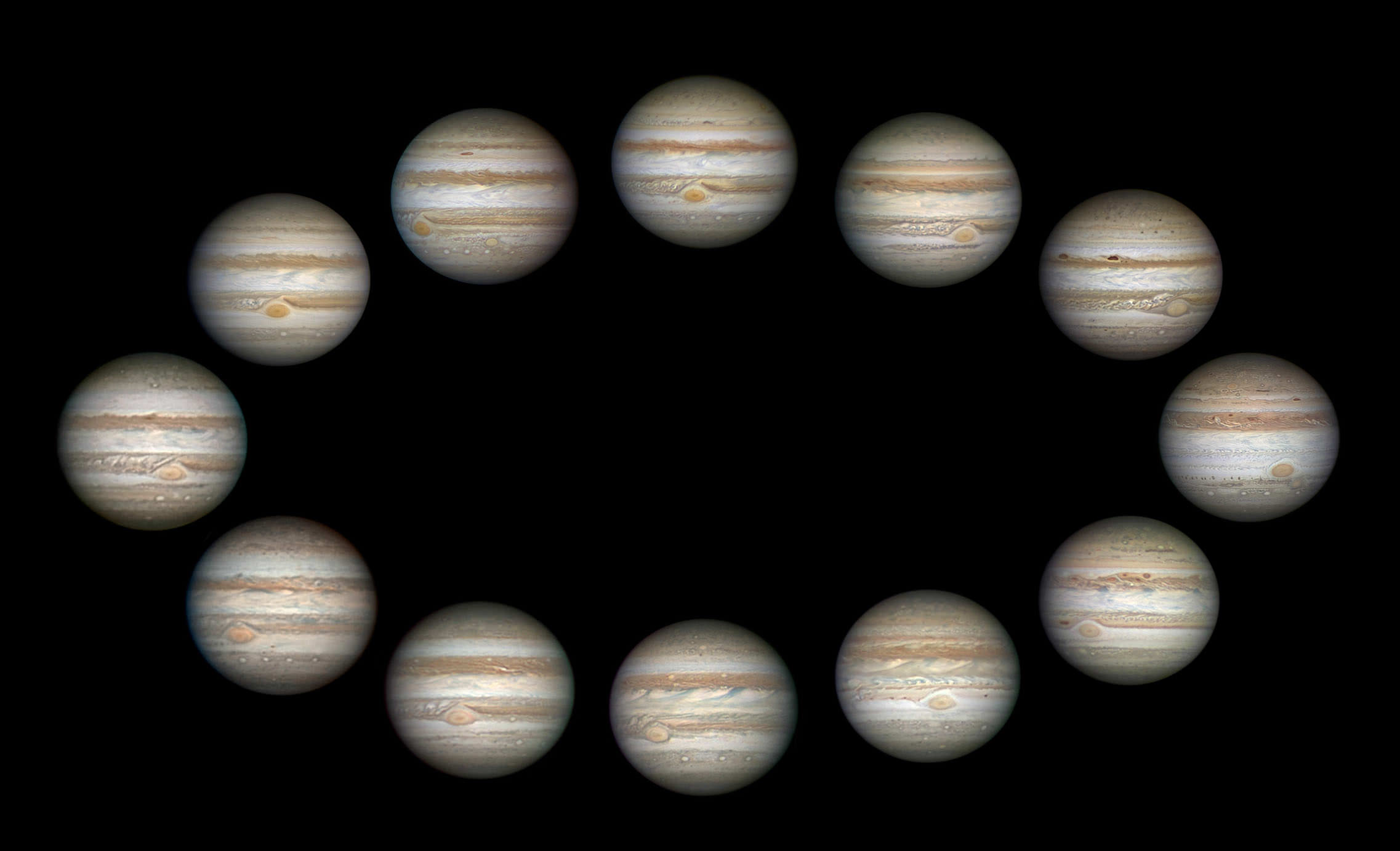For Jupiterians (Jovians?) a trip around the Sun takes 12 Earth years. If you were born today on the planet or one of its moons, you’d turn one year old in 2027 and reach the ripe old age of 12 in 2111.
In this remarkable montage, astrophotographer Damian Peach divides a year on Jupiter into 12 parts, with images spaced at approximately one-year intervals between February 2003 and April 2015. Like the planet, Peach was on the move; the photos were taken from four different countries with a variety of different telescopes and cameras.

On the tilted Earth, one year brings a full change of seasons as our planet completes a solar loop in 365 1/4 days. Jupiter’s axial tilt is just 3° or nearly straight up and down, so seasons don’t exist. One part of the Jovian year is much the same as another. Still, as you can plainly see, the solar system’s biggest planet has plenty of weather.
Just look at the Great Red Spot or GRS. Through about 2008, it’s relatively large and pale but suddenly darkens in 2010 at the same time the South Equatorial Cloud Belt (the wide stripe of clouds above the Spot) disappears. If you look closely at the Spot from year to year, you’ll see another big change — it’s shrinking! The GRS has been dwindling for several decades, but it’s amazing how obvious the difference is in only a dozen years.

Lots of other smaller changes can be seen, too. On Earth, the primary heat source driving weather is the Sun, but on Jupiter it’s residual heat left over from the collapse of the primordial solar nebula, the vast cloud of dust and gas from which the Sun and planets were formed.
It’s HOT inside Jupiter. A thermometer stuck in its core would register between 23,500° and 63,000° F. That’s too cool for nuclear fusion, the process that powers the Sun, but plenty hot to heat the atmosphere and create magnificent weather. The planet gives off 1.6 times as much energy as it get from the Sun. While hardly a star, it’s no ball of ice either.
Jupiter and Venus still travel in tandem at dusk. Look about an hour after sunset a fist and a half high in the western sky. Venus is the bright one with Jupiter tagging along to the right. Fun to think that the light we see from Jupiter is reflected sunlight, but if we could view it with heat-sensing, infrared eyes, it would glow like an ember.


Delightfully comprehensive, quite informative – interesting ..thank you!
Yes another great article from Bob, I wonder if any of the residual heat coming from Jupiter has any influence (heat wise) on its many Moons?
UFOs,
Thanks!
Interesting question. Probably very little on Io, the closest large moon, due to the overwhelming effects of tidal heating. The closest moons – Metis and Adrastea – lie about three times closer than Io. Naturally, they’re warmed by sunlight during the day, but your question makes me wonder whether at night, they might be warmer than otherwise due to heat emanating from Jupiter. My hunch is there would be some measurable amount.